With over 7 billion searches done daily on the world's most popular search engine, businesses have as many opportunities to be found online. Unfortunately, search engine optimisation (SEO) is so competitive that it can be challenging to break through, especially for small firms.
Still, the SEO outsourcing market is expected to reach USD$63.19 billion this year and USD$ 134.26 billion by 2026, according to globalnewswire.com. These figures exclude costs incurred by businesses with in-house SEO teams.
When done right, small businesses can leverage optimisation techniques to craft site content that drives traffic, attracts high–value leads, and increases conversion rates
Why SEO is Essential for Small Businesses
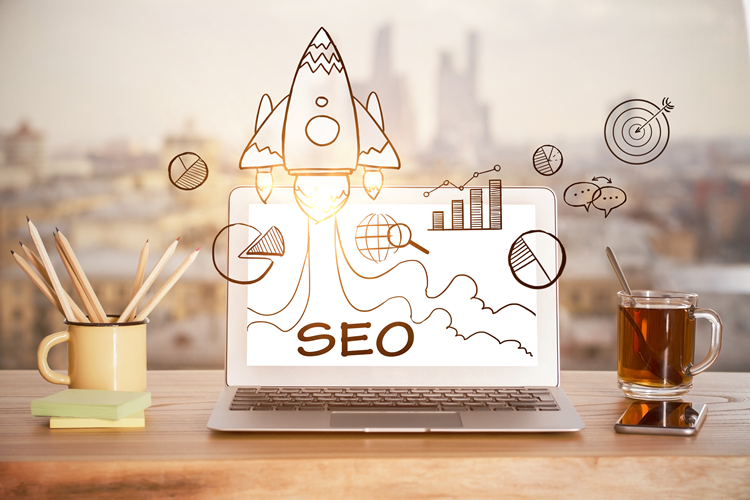
Showing up on top of the search engine results page (SERP) should be a priority for small firms. Online visibility ensures their products and services are found online, promoting brand awareness. Establishing a digital presence also helps build a firm's customer base and increase website traffic, boosting a company's search ranking.
According to a 2020 study, 28.5% of users clicked on the SERP's first result whereas the second and third pages earned 15% and 11% clicks, respectively. Plus, 46% of all searches are for a local business. In these searches, 92% of the results featured a Yelp page in the top five. Yelp is an all-in-one platform that connects consumers to local businesses and is available in several countries.
SEO Strategies and Small Businesses
Search engine algorithms evolve constantly, and ranking high on SERPs entails several optimisation strategies to adapt to these requirements. For example, the world's most popular search engine has 200 SEO ranking factors to consider.
When a query is initiated, crawlers scan each available page for ranking based on these factors, including content relevance, quality, and usability. These bots also analyse a user's search intent and context to provide what they think are the best results for every query.
That said, small businesses must understand how SEO works and integrate these ranking considerations, as covered by three main optimisation categories.
- On-page SEO
- Off-page SEO
- Technical SEO
On-page SEO focuses on multiple methods that make content more visible in organic searches. Businesses can use various on-page activities to boost their ranking which include proper formatting, image optimisation, and using the right and most-searched keywords.
These tactics focus on crafting high-quality content that readers would love to share and link to their pages - since crawlers look at user experience in ranking pages.
In most cases, SEO tactics are complemented by other online marketing strategies for optimal results.
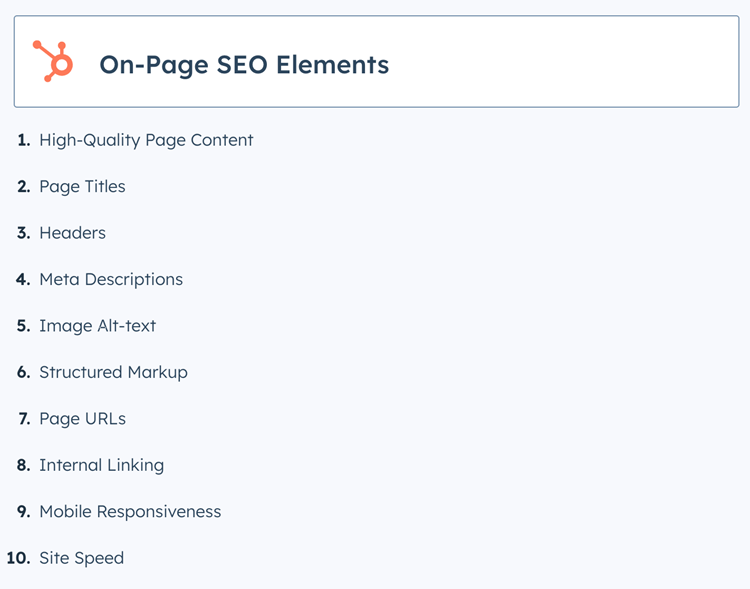
Image Source: Hubspot.com
Off-page SEO covers techniques done off the website that boost rankings of a business's page. These methods improve page authority using other means, such as promoting your pages on social media, collaborating with influencers and other more popular brands, building backlinks, or posting your page links in as many online channels as possible.
When any of your business pages show up on other sites, the search engine and online users will assume that your content is relevant and authoritative, earning your business a higher place on the results page.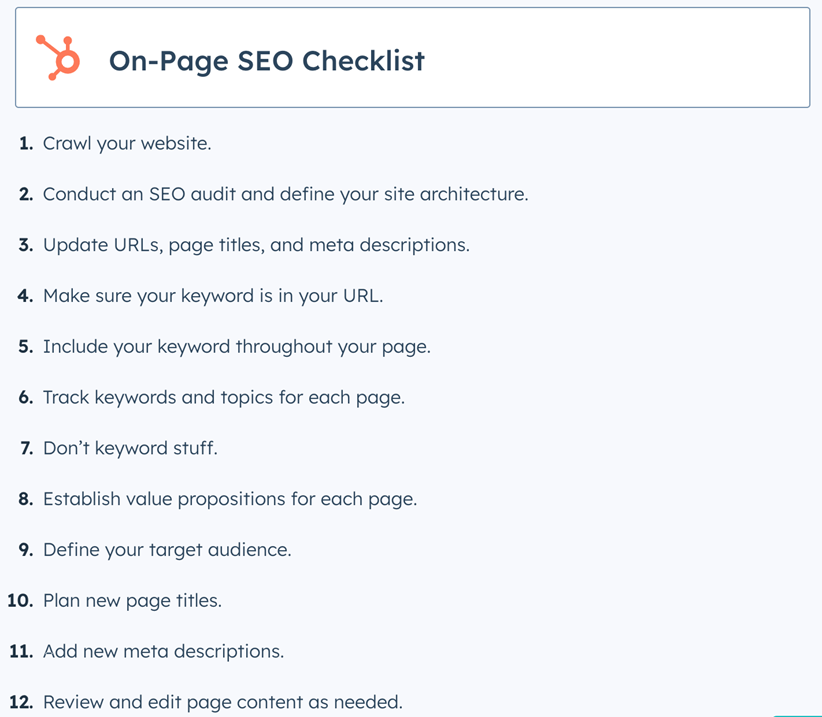
Image Source: Hubspot.com
As the name implies, technical SEO involves activities to make your business site pages easily understood by search engines. These include making HTML tags, studying site maps, canonical tags, and other technical components to boost page loading speeds.
Small businesses must consider the time it takes for their pages to load on mobile devices, as it's the most-used gadget for online searches. Technical SEO helps firms optimise their pages, images, videos, and other content to improve user experience and prevent high bounce rates. At the same time, creating a sitemap for the company's website lets search engines understand the site's structure, enabling them to index and rank your pages better.
Because organic search remains a huge traffic source for business sites, SEO is integrated into many companies' top digital marketing strategies.
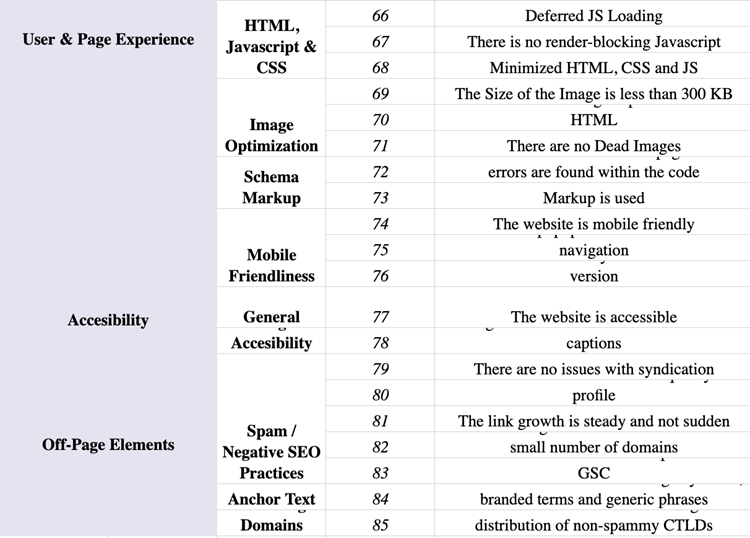
How SEO Boosts Small Business Revenues
Sound SEO practices provide small firms with several benefits besides ranking high in SERPs. They enable enterprises to boost their marketing campaigns by expanding reach, focusing on high-quality prospects, and driving conversions.
Apart from enhancing marketing campaigns, well-executed SEO strategies help increase profit margins through the following:
- Supporting The Lead Generation Process
- Targeting High-Value Leads Through Local SEO
- Enlisting in the local online business directory
- Placing complete business address and contact information on their business profile
- Creating localised landing pages
- Getting mentioned by other local sites or on customer review sites
- Analysing local SEO performance and studying competitors' strategies
- Driving Conversions
- Reducing Customer Acquisition Cost
- Brand authority: SEO helps small businesses gain a foothold in the market and establish brand authority. A reliable brand will require less marketing spend because fewer resources are needed to attract, persuade, and prove to consumers that the company is the best option. However, achieving this status takes time and hard work, and firms must adapt to the ever-changing consumer behaviour and preferences.
- Customer retention: Industry estimates reveal that it's five times costlier to spend for customer retention than acquisition. Small businesses tend to focus on getting leads and prospects that they forget about their existing customers, leading to missed income opportunities.
- Reducing Marketing Expenditures
Companies should always be on the lookout for potential buyers. These consumers, also known as leads, should be guided and encouraged by the marketing team through the different sales funnel after building brand awareness.
Companies use several online and offline channels to connect with their audiences. A 2018 poll by Search Engine Journal revealed that organic search is the leading digital marketing channel with the highest investment returns. Paid search, social media, and email complete the top four digital platforms for business advertising.
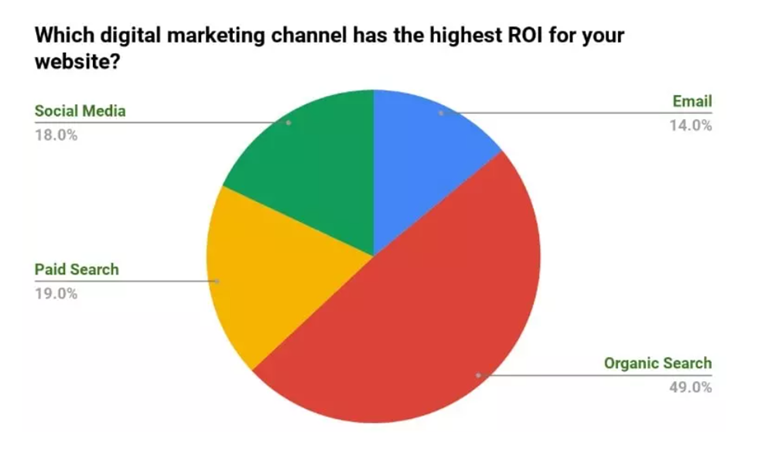
Image Source: Search Engine Journal
The result isn't surprising since over half of consumers in the United States turn to search engines to start their purchasing journey. Users want to know more about the product and read online reviews. Hence, small businesses must build their online reputation to create a positive impression. Uploading customer reviews on your business site or other platforms can help build trust that draws in more potential buyers.
With proper SEO techniques, small businesses will consistently appear on top of the search results. Consequently, site traffic will increase, attracting more potential buyers or leads with less spending.
Besides the three primary optimisation strategies discussed above, small businesses can focus their efforts on local SEO. This technique encompasses methods that increase online visibility in local searches.
According to the Search Engine Journal, 90% of consumers used the internet to find local businesses in 2020. More importantly, 76% of local search smartphone users visit the store within a day, with 28% leading to actual purchases. These are clear indications for small businesses to pursue this potentially untapped market instead of wasting time and resources chasing unproductive leads.
SEO crawlers consider a user's context and proximity too when ranking results. As soon as a machine senses a user's local query intent despite the absence of a location on the search keywords, it automatically includes the related businesses within the searcher's proximity.
While separate algorithms are used for standard organic and local searches, popularity and relevance remain essential elements in local search ranking. Small firms can tap these high-quality leads through local SEO best practices, such as:
Besides boosting standard on-page, off-page, and technical optimisation practices, local SEO gives small businesses the upper hand over their bigger competitors because of proximity. When consumers are ready to purchase, they'll likely choose firms that appear on top of the local search instead of driving interstate to visit other stores.
Simply put, small businesses can enjoy higher profit margins by attracting high-value or ready-to-purchase leads through local SEO.
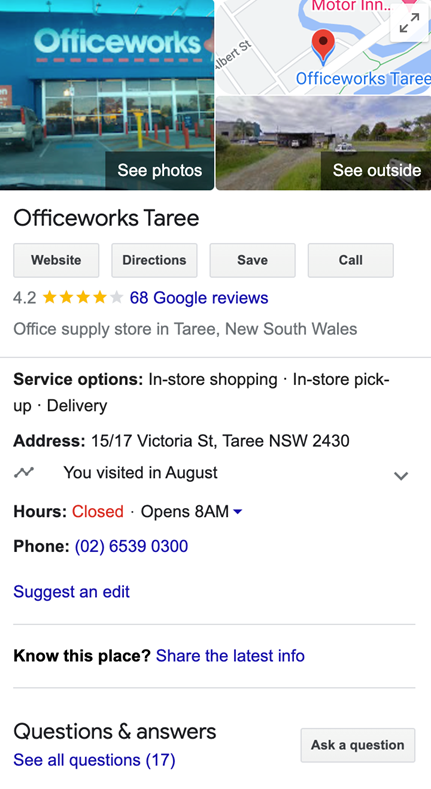
Several elements are involved in purchasing decisions. But 2021 Deloitte research has discovered that the most effective marketing strategies establish direct customer connection and engagement.
When a company's page consistently ranks in the top position of the search results, users will think positively about the brand. This initial impression will drive them to your site, and practicing effective SEO will encourage them to convert.
According to a study, the average conversion rate across four significant industries, e-commerce, legal, business-to-business, and finance, is 2.3%. Businesses with at least 5.3% conversion rates belong to the better performers while SEO leaders score about 11.45%.
Regarding conversion rates from various traffic sources, referrals took the lead in 2019 with 3% whereas paid and organic searches were a close second at 2.6%. Email marketing came in a close third at 2.5%.
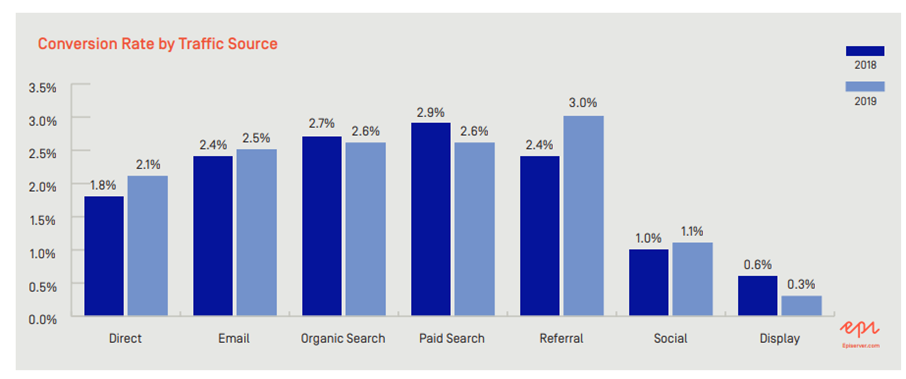
Image source: optimizely.com
SEO helps drive conversion, as it can be used in many other marketing strategies to convert leads to prospects and drive purchases. With optimisation, small businesses can identify and test the most effective keywords on their landing and call-to-action pages and other traffic sources, including social media platforms, increasing the chances of conversions.
Through performance analytics and keyword searches, SEO teams help improve the company's site by focusing on customer preferences. Improving the site's layout, content and navigability contribute to a user-friendly website. Moreover, it reduces bounce rates and improves the overall visitor experience.
Providing users with the best experience encourages them to come back and read more content. More importantly, supporting SEO efforts with excellent customer service encourages a stream of potential and high-quality leads. According to Nielsen's 2021 Trust In Advertising survey, up to 88% of consumers will trust a product more if someone they know recommends it.
Optimisation isn't exclusively for lead generation but is useful in the conversion and lead nurturing processes, placing prospects closer to successful sales closures.
Customer acquisition and retention are the primary end goals for any marketing activity. Businesses must employ offline and online strategies across all channels to achieve this. SEO is one of the many tools that can be used individually or to support other multi-channel campaigns.
Customer acquisition cost refers to the expenses incurred in getting a new client. It can vary from one business to another, and start-ups understandably get higher CAC rates because they must invest in aggressive campaigns to establish their presence.
One great thing about optimisation is that it can be applied to meet specific business requirements, and it's affordable, even for small businesses. Additionally, it can attract and nurture potential buyers at any sales funnel stage.
By using SEO, enhancing customer service, and tapping customer relationship management (CRM) platforms, businesses can get to know their customers better. With these tools, firms can initiate targeted campaigns by sending personalized messages, launching loyalty programs and special promotions, and mailing customized content that compels them to trust and purchase from a brand. These tactics can also be used to encourage referrals, which reduces CAC and increases profit margins.
A good rule of thumb is that firms spend about 10% of their revenues on marketing activities. In reality, figures vary in terms of industry. A 2022 Gartner study revealed that budgets for 2022 rose to 9.5% from only 6.4% a year before. At the height of the pandemic in 2020, marketing expenditures reached 11%.
Furthermore, online marketing accounts for 56% of the total budget, leaving 44% for offline channels. Social media advertising is the channel that businesses spend the most on.
In the US, businesses are expected to spend USD$71.32 billion on SEO for 2022, or 8.4% of the country's USD$841.7 billion online marketing expenditure. The slight decrease in digital spending could indicate that more businesses are turning to traditional forms of advertising to boost their online campaigns, as shown in the succeeding sections.
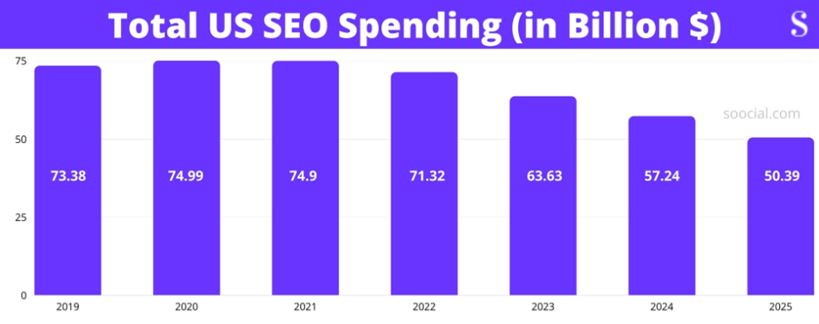
Image credit: soocial.com
It's important to note that over 60% of the estimated SEO spending comes from small businesses, which comprise over 99% of the sector.
SEO Spending and ROI
Marketing activities are generally costly, especially for start-ups and small firms. This puts them at a disadvantage over their more established competitors with better funding.
Firms in the US spend USD$497 on average on SEO services, based on a 2020 analysis. However, firms that invest more were reportedly happier with the results.
Return on investment (ROI) for SEO varies from one business niche to another and how a company stacks up against the competition. For an e-commerce company, the average is at 275% or USD$2.75 for every dollar spent, moz.com estimates. Meanwhile, the average return for paid ads is 200%. Comparatively, PPC campaigns are more expensive to run, costing up to USD$10,000 per month.
Of course, SEO campaigns will have to work with other online and offline strategies. But entities can, for instance, lower spending on their pay-per-click or searched ads while relying on organic searches. Similarly, they can skip certain offline marketing strategies, such as print, radio, and television advertising costs - which cost substantially more, especially for prime spots. For instance, evening ads on television are priced from USD$200 to USD$2,000 per airing.
Concluding Thoughts
SEO aims to help businesses by boosting online visibility and rankings without costing an arm and a leg. That said, small businesses can leverage SEO to compete with their more established competitors to expand their market share.
When done strategically and consistently, SEO tactics help firms increase their profit by:
- Boosting traffic and attracting more potential customers
- Targeting high-quality leads who are ready to purchase
- Encouraging repeat visits and increasing conversion rates
- Establishing brand authority and customer retention, reducing customer acquisition costs
These benefits can ultimately lower overall marketing and operational spending as the brand claims its space on top of consumers' minds, especially when they're ready to purchase.
